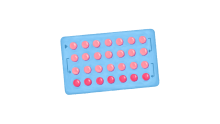UC Merced Student Health Services is proud to offer a full range of reproductive health care services to students of all genders and sexual orientations.
The following list of services offered is not comprehensive. If you have a concern regarding your sexual health, we encourage you to set an appointment with an SHS provider to discuss your issue in more detail. Outside specialist referrals are available as needed but may be limited for certain insurances.
Click the links below to learn more about each of these services.
Reproductive Cancer Screening Exams
Birth Control and Emergency Contraception
Sexually Transmitted Infection Testing and Treatment


